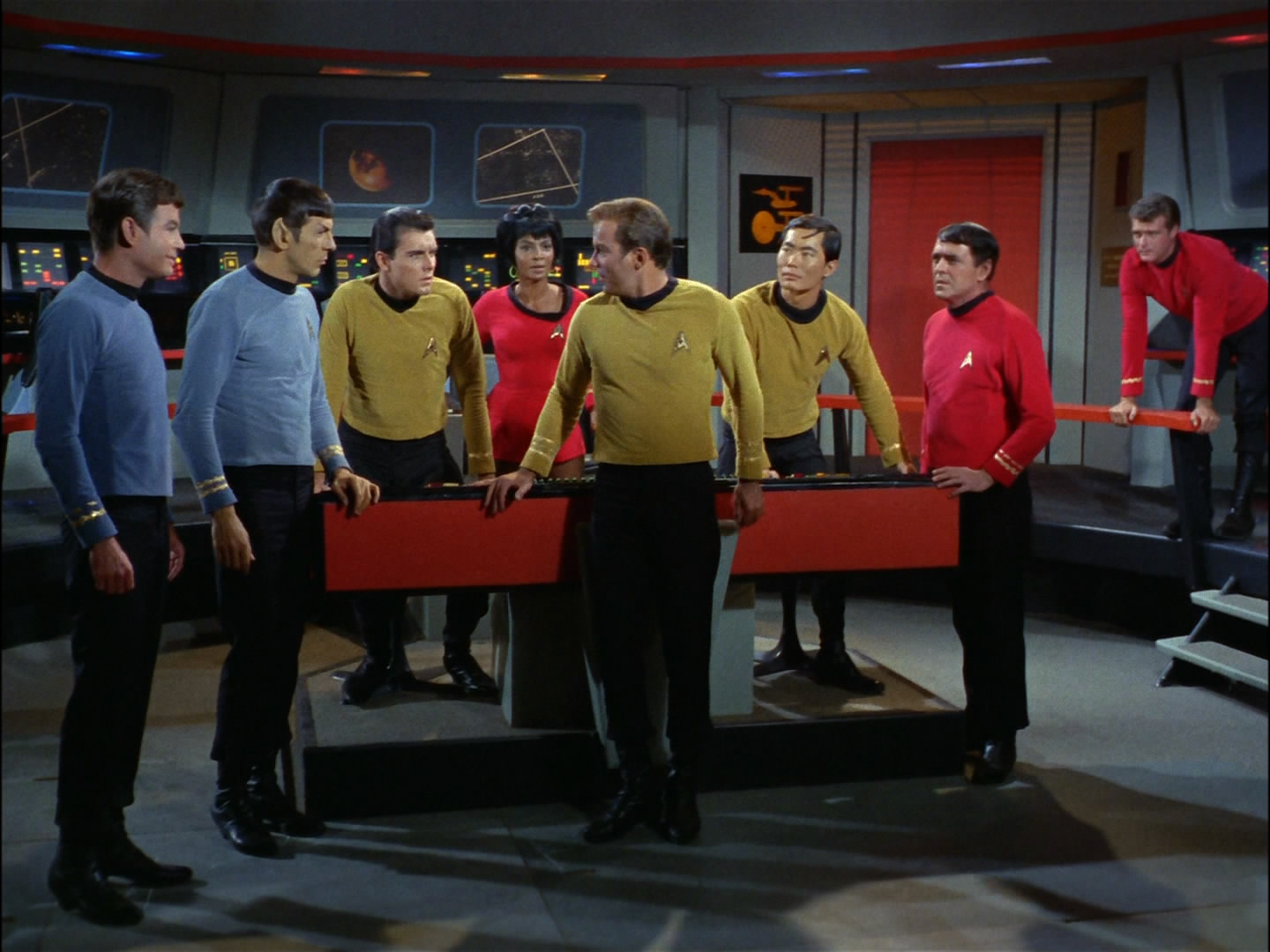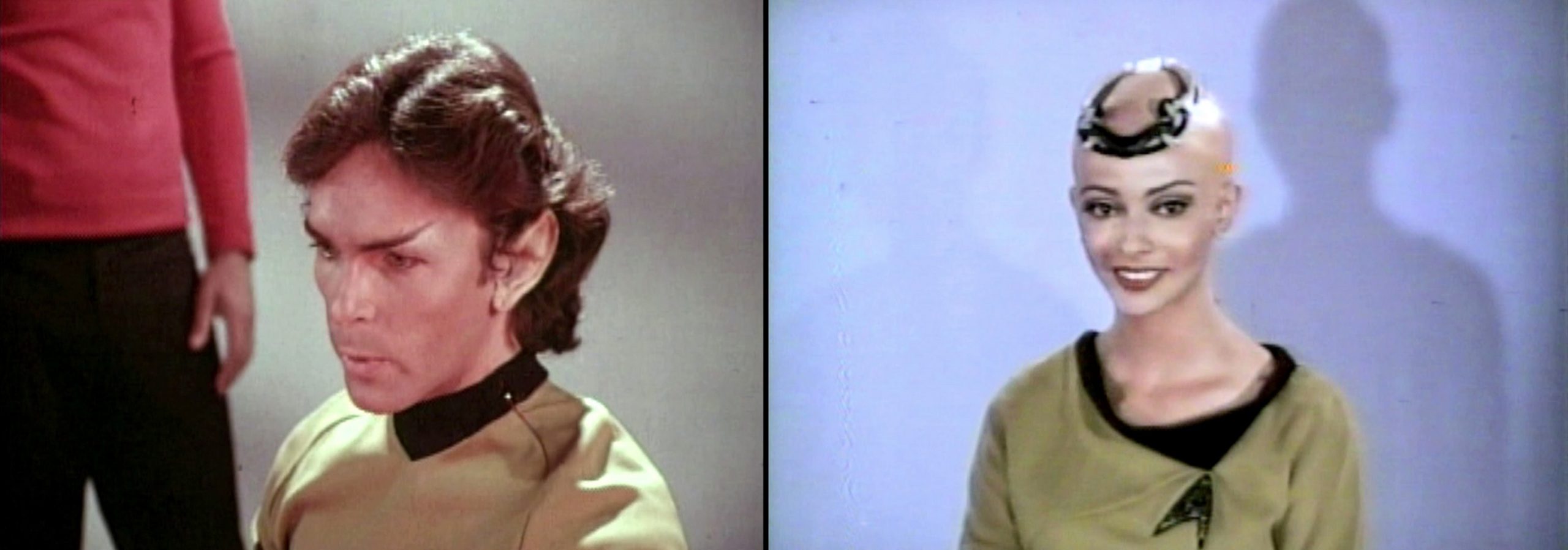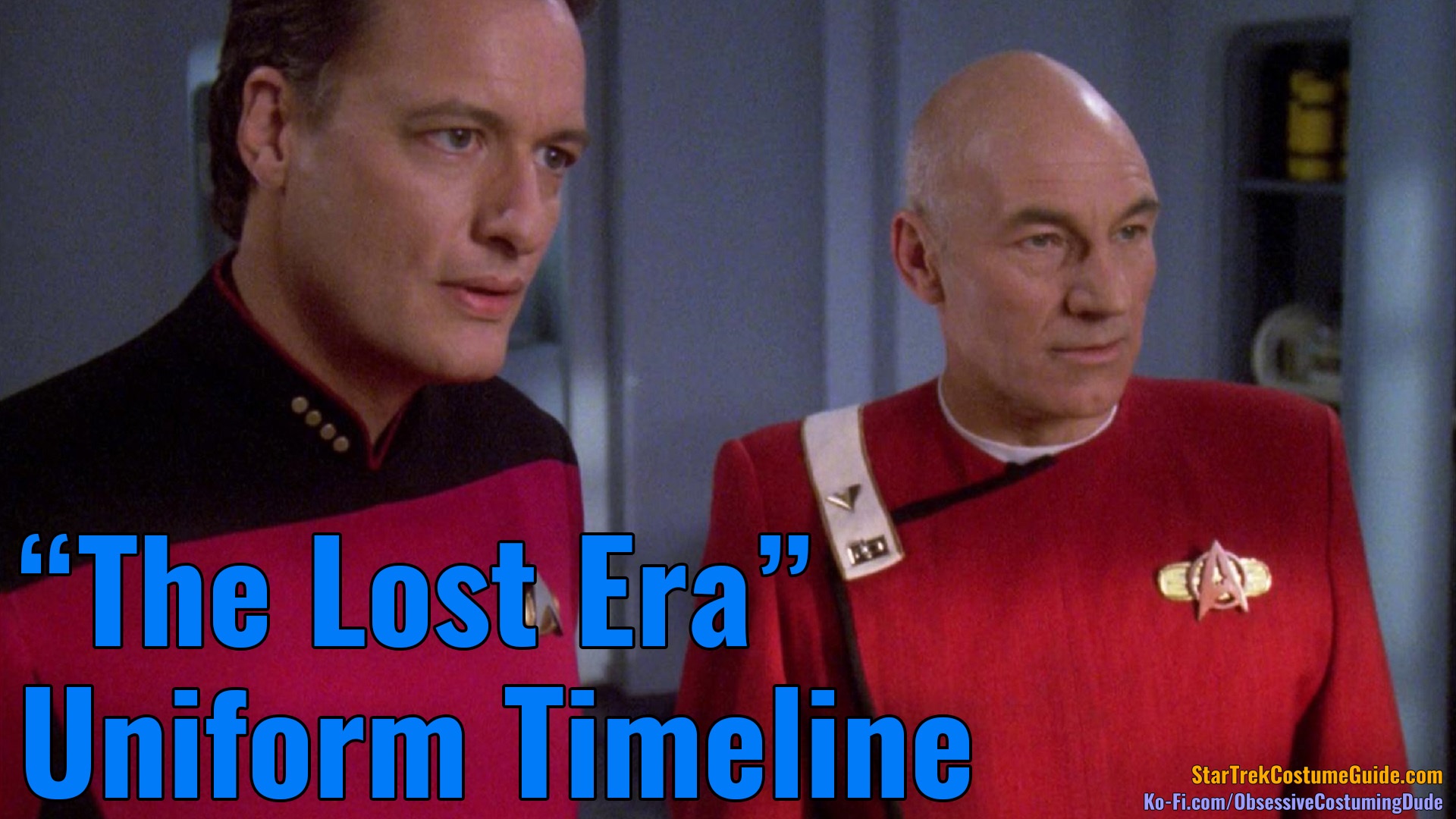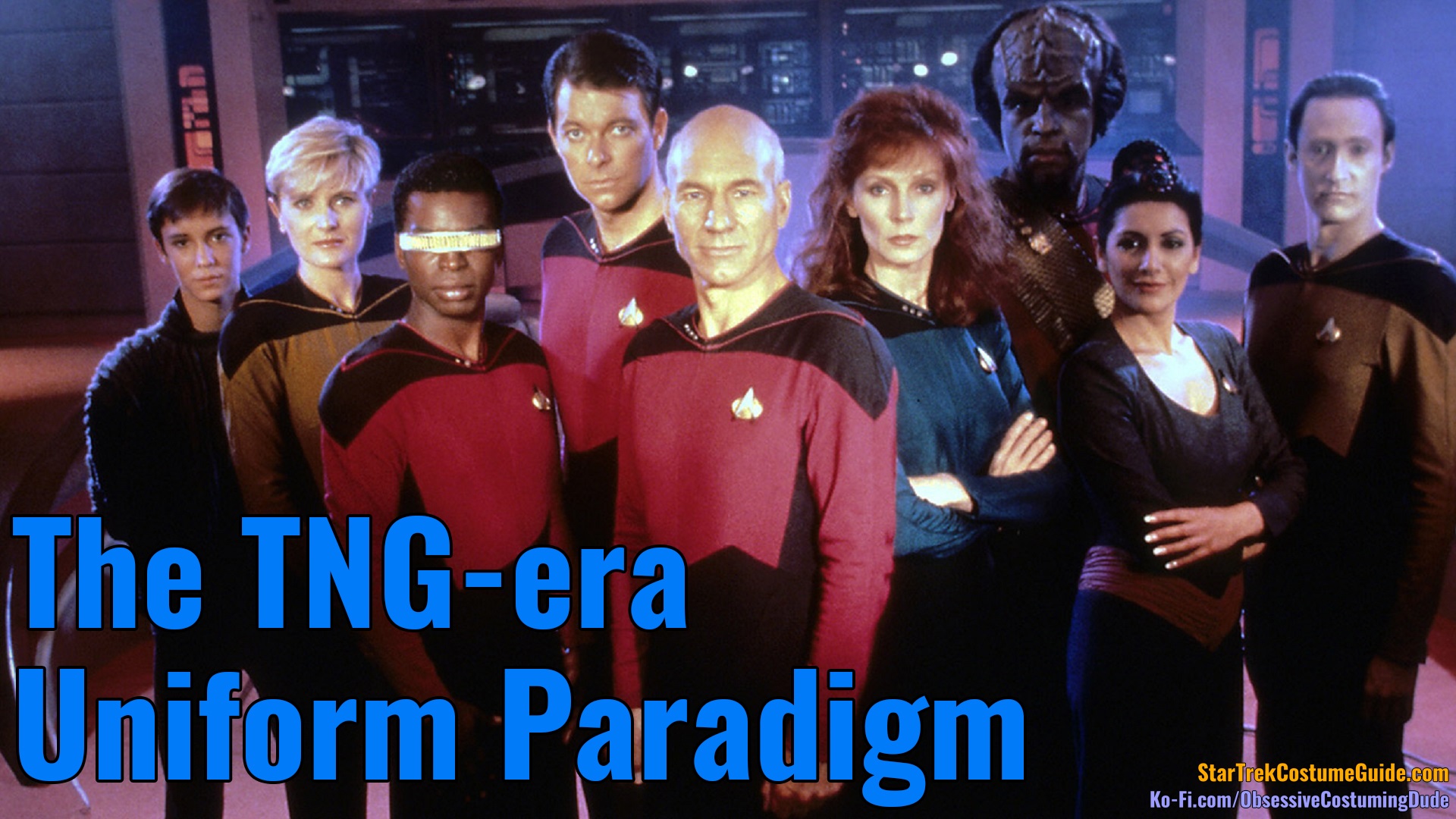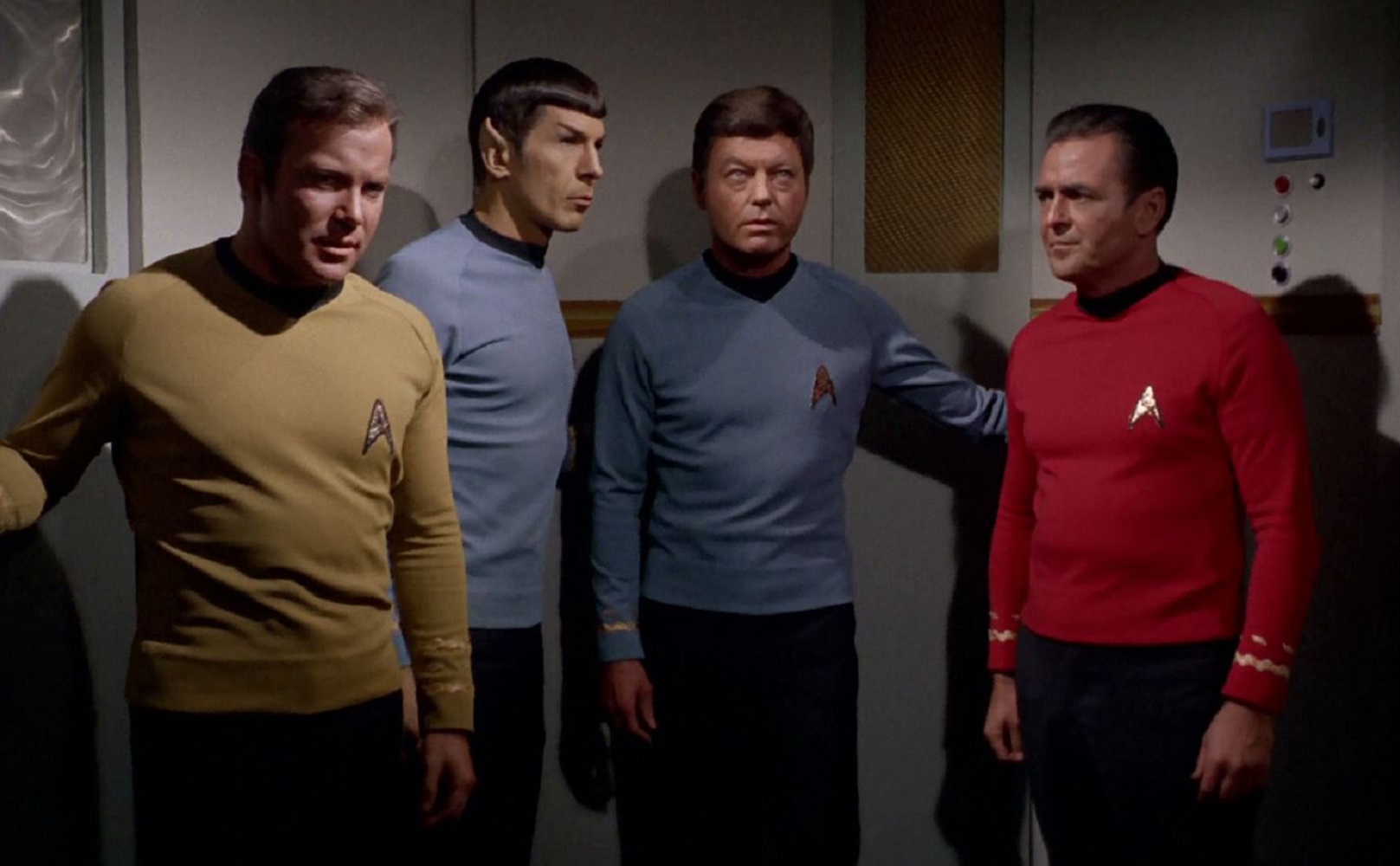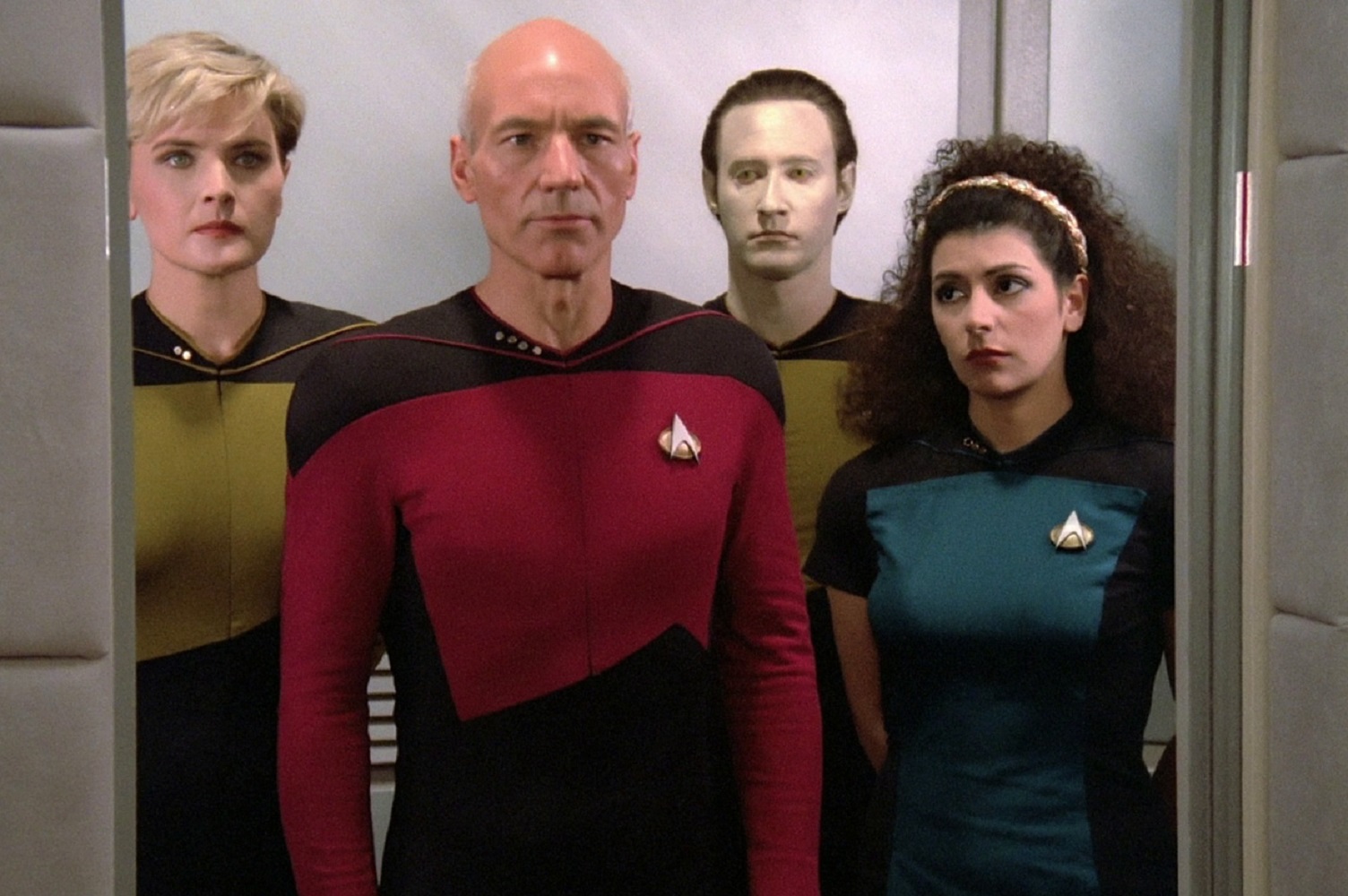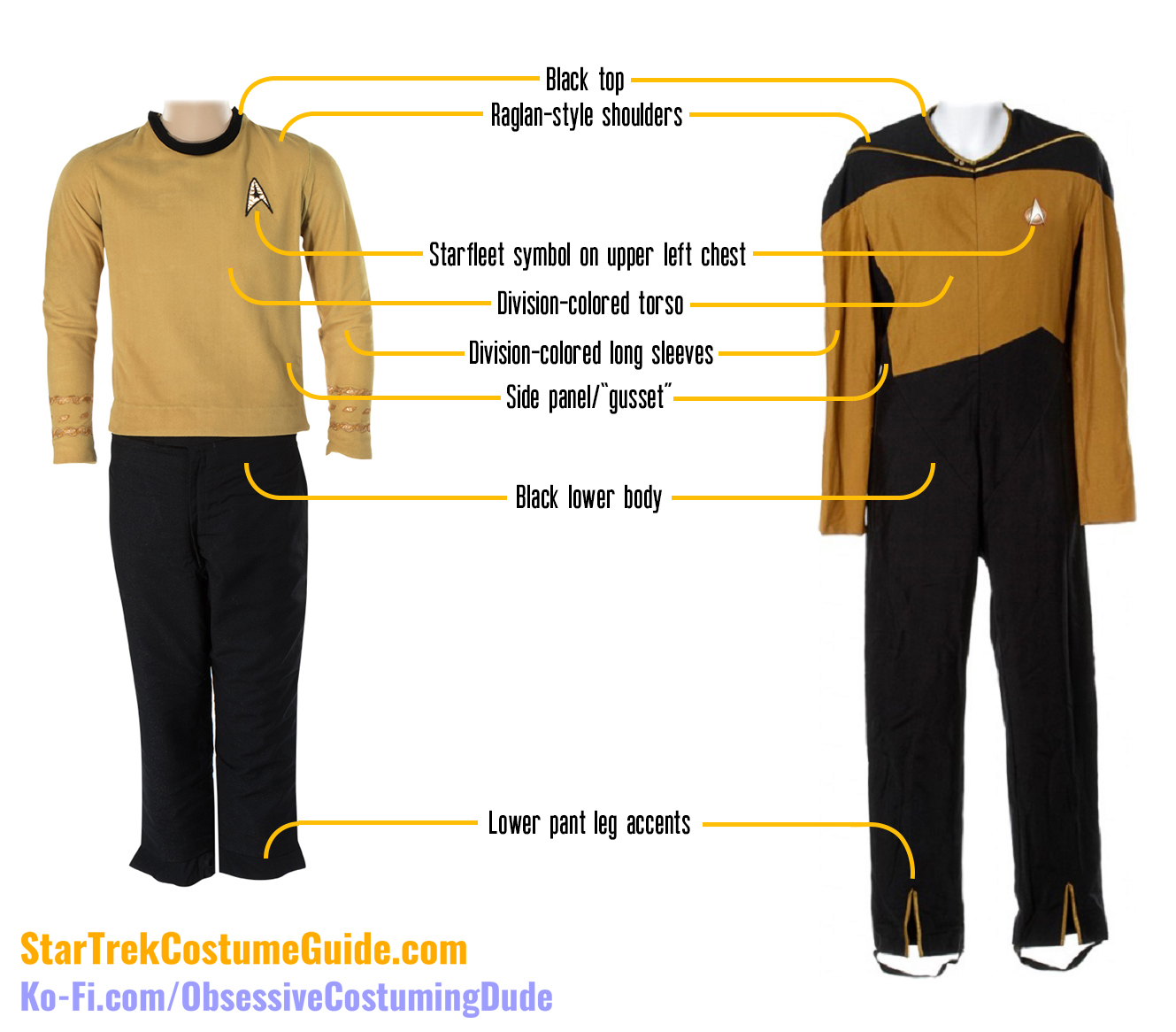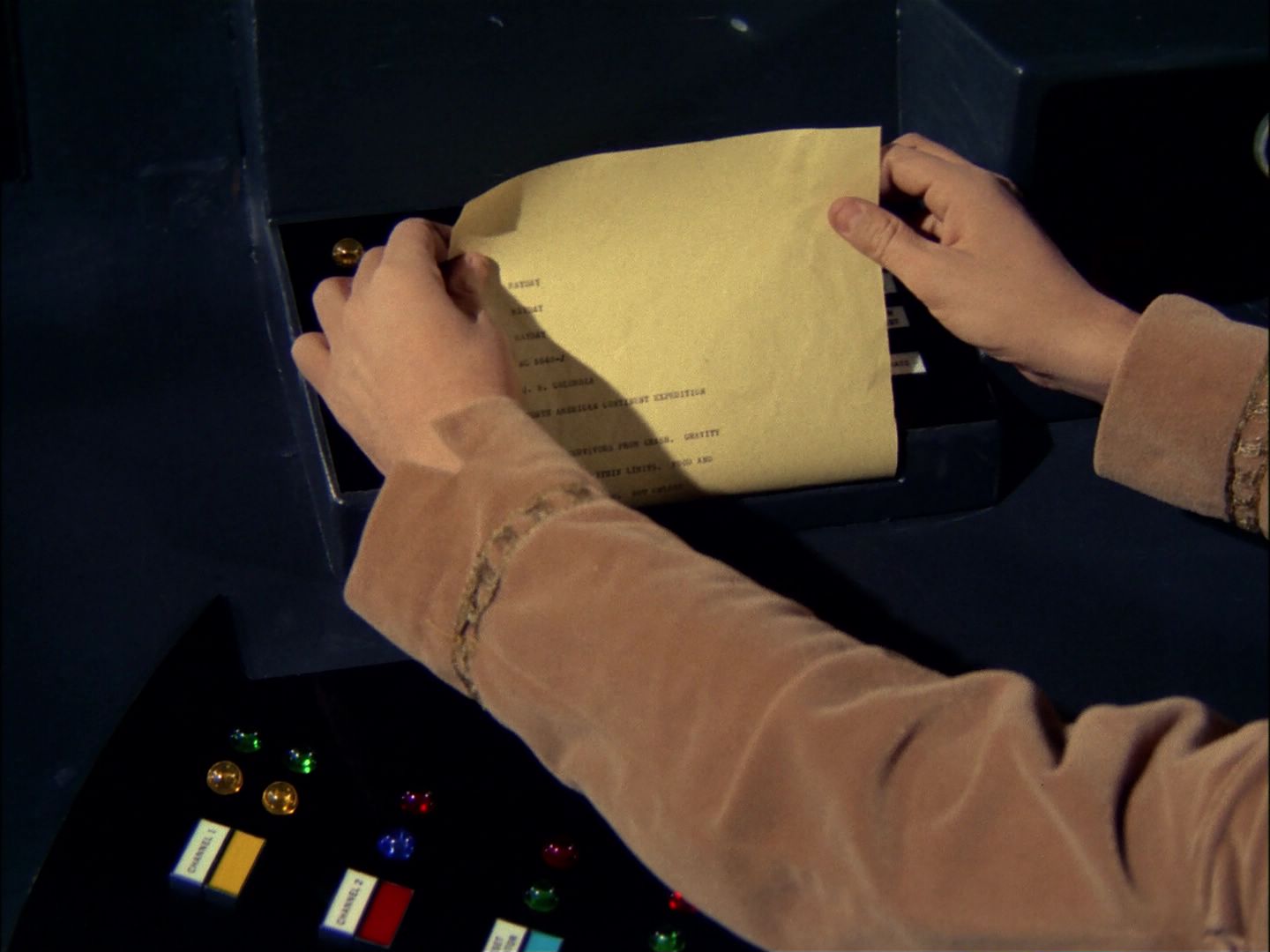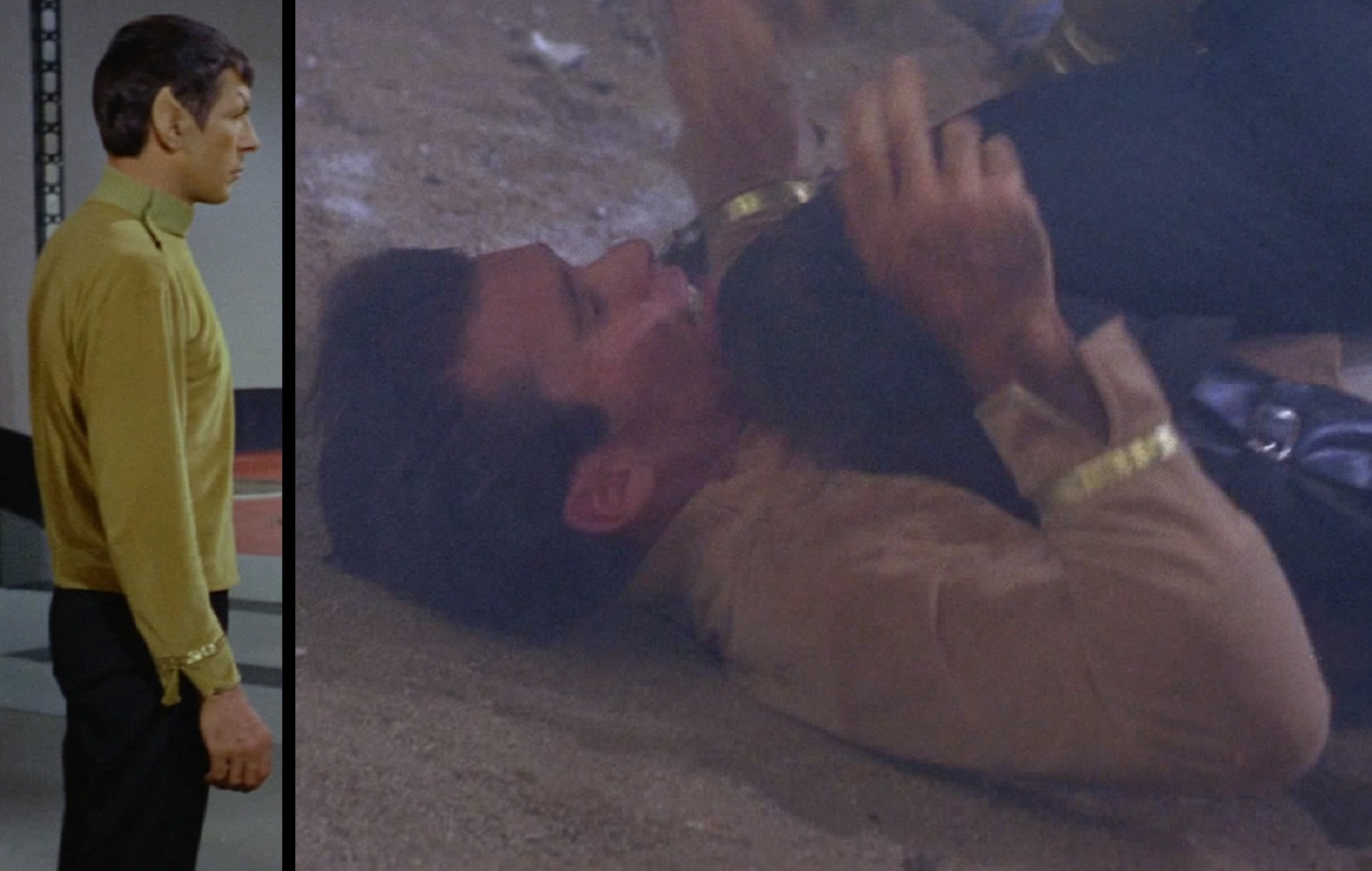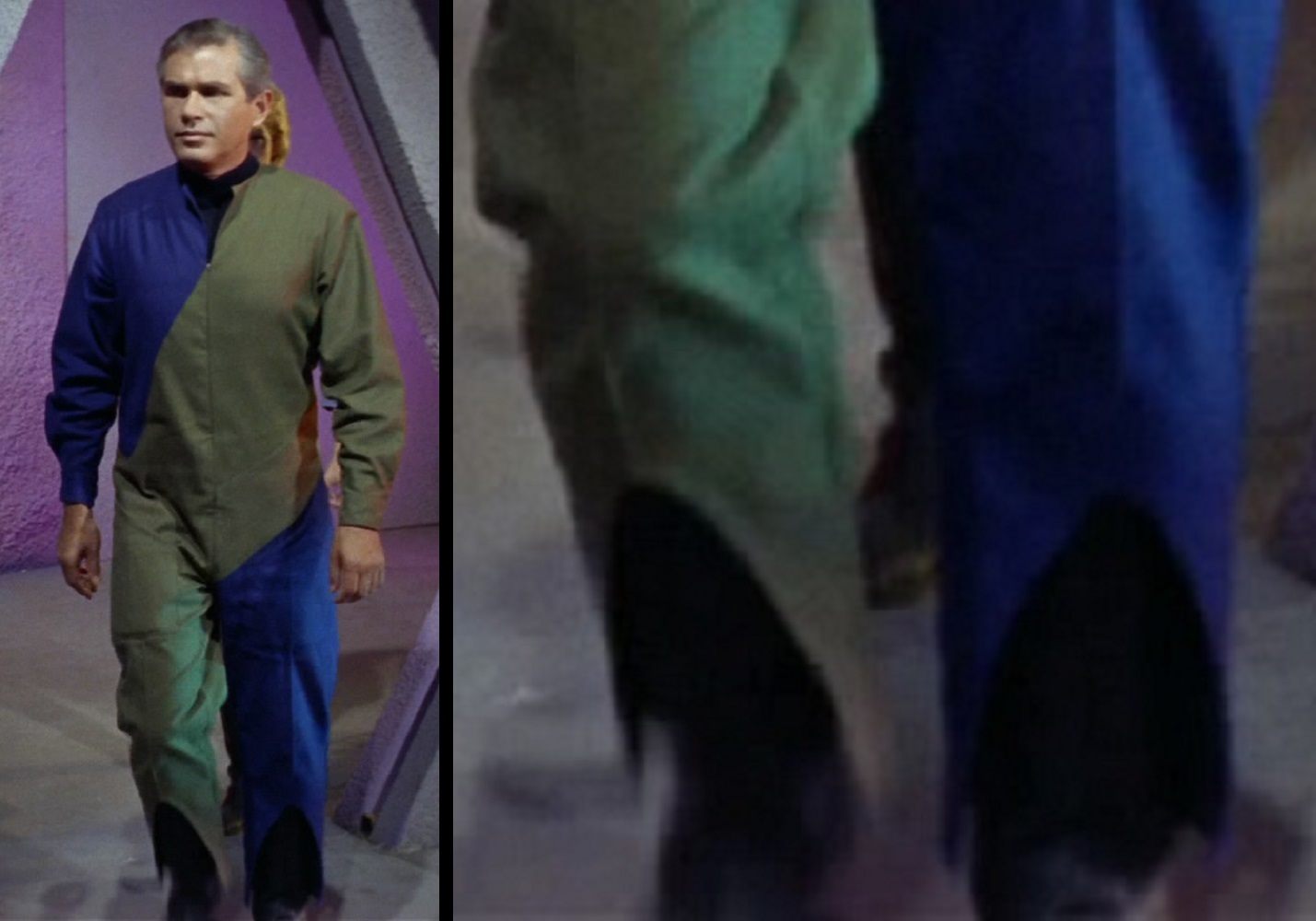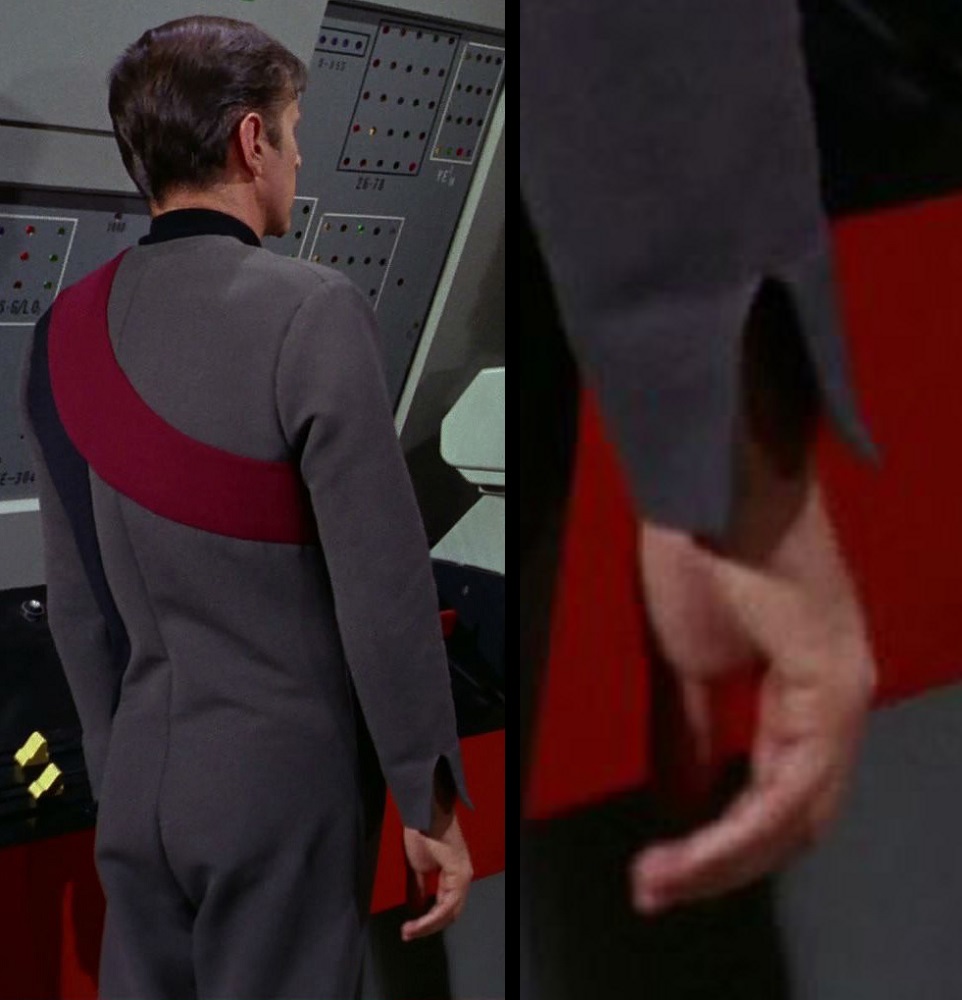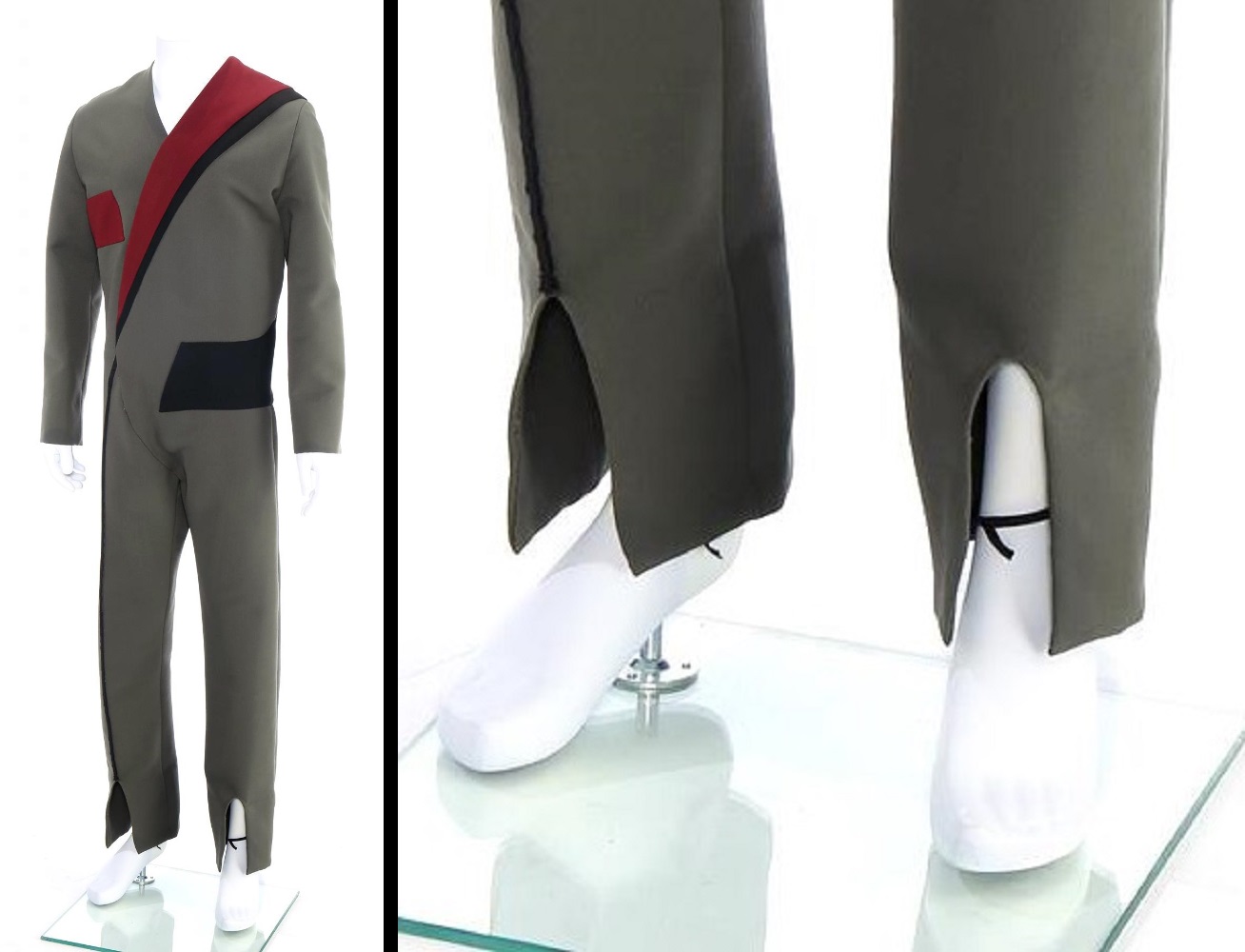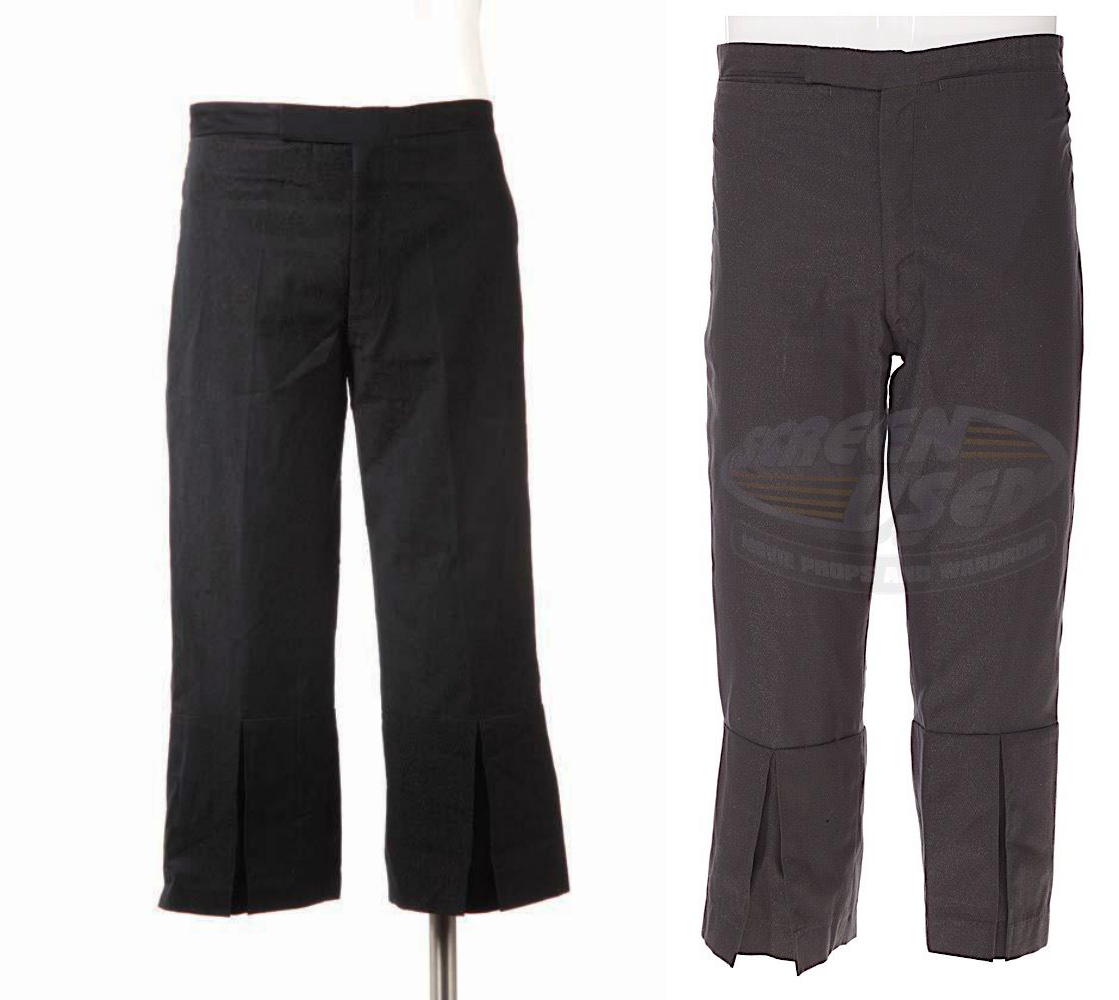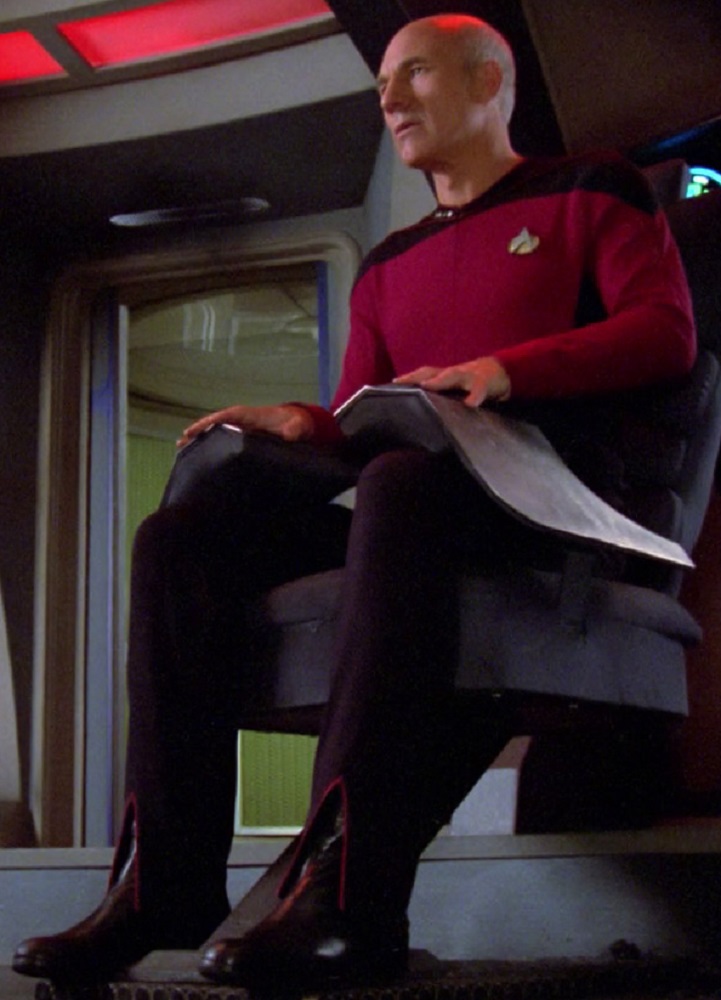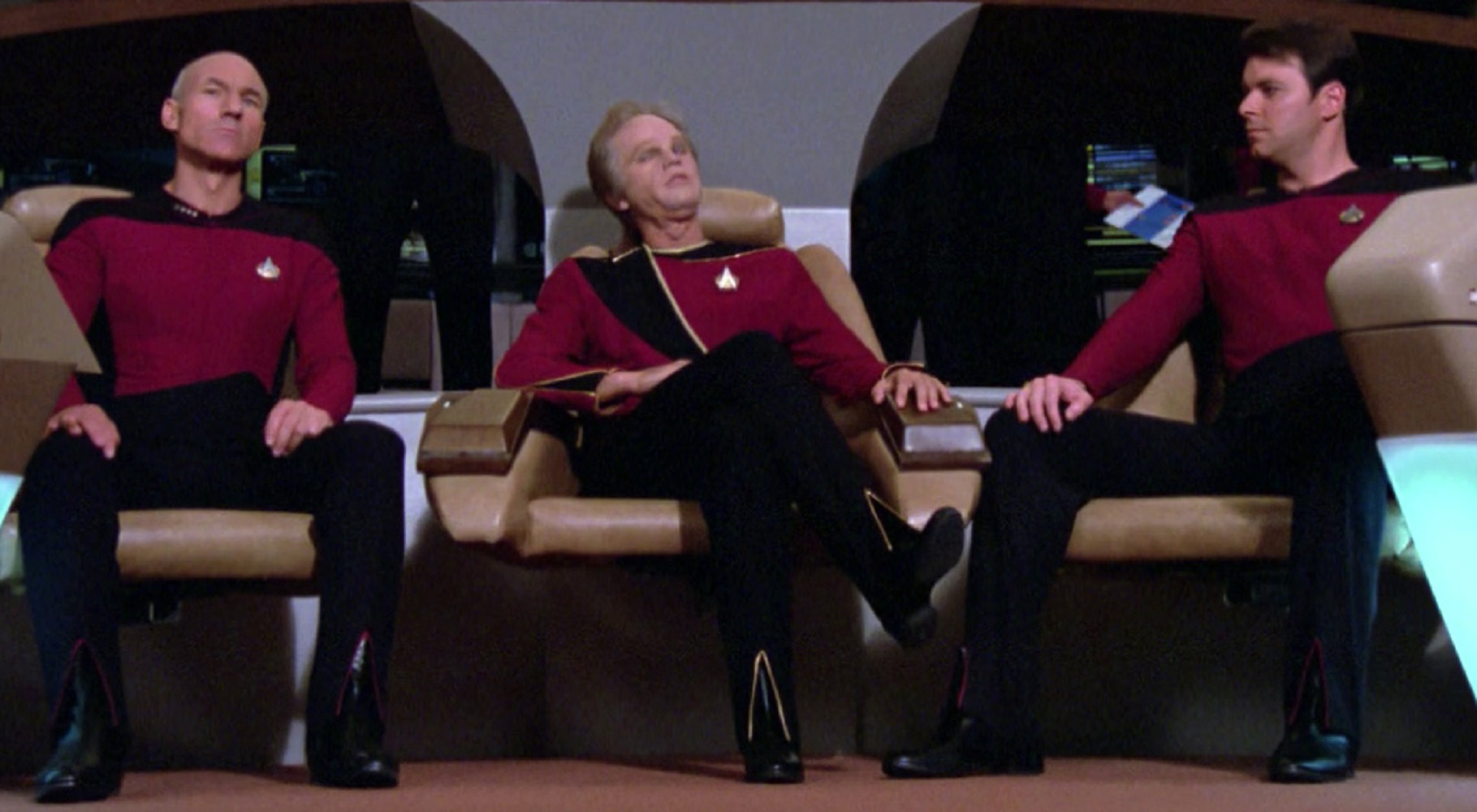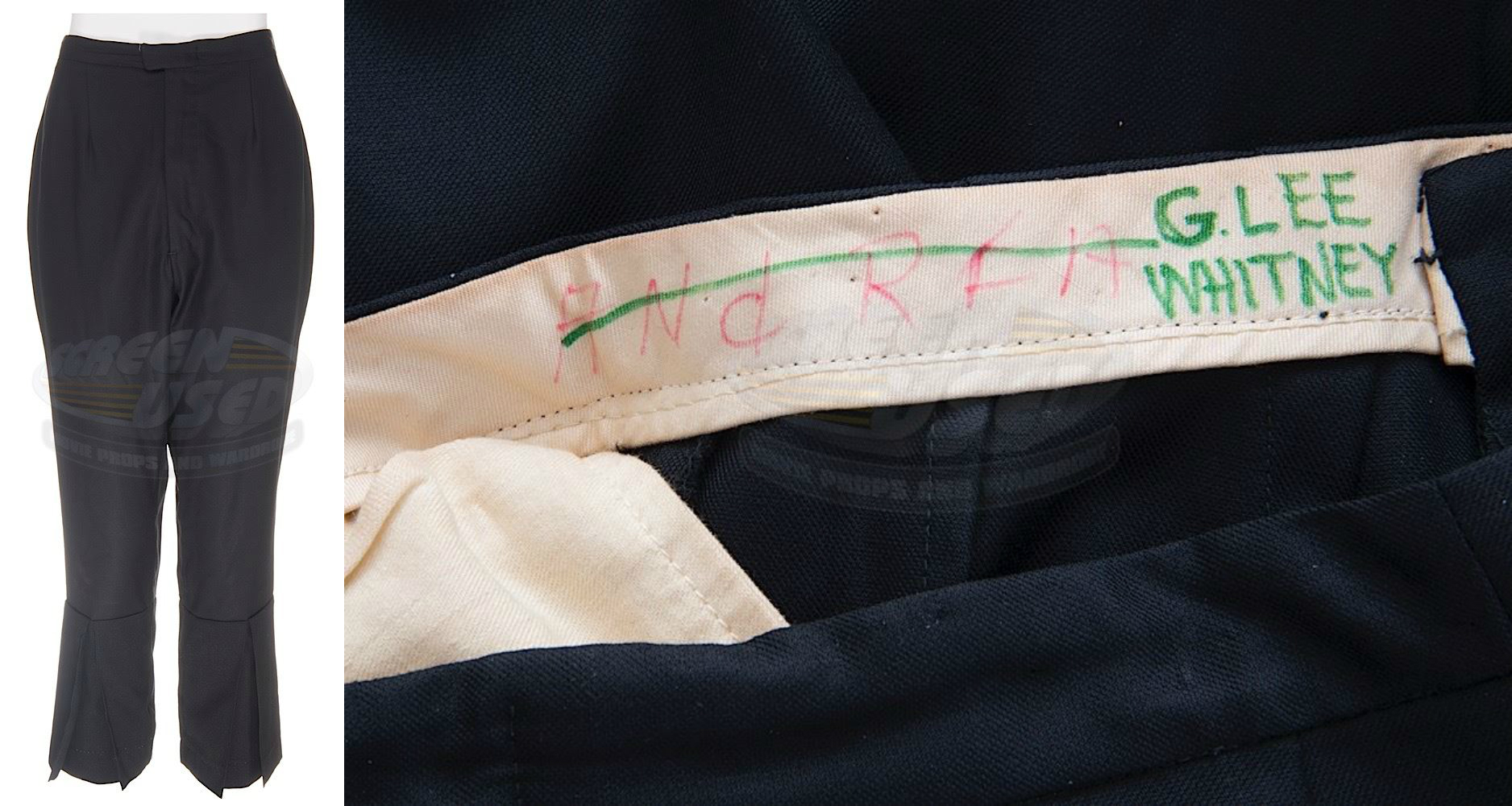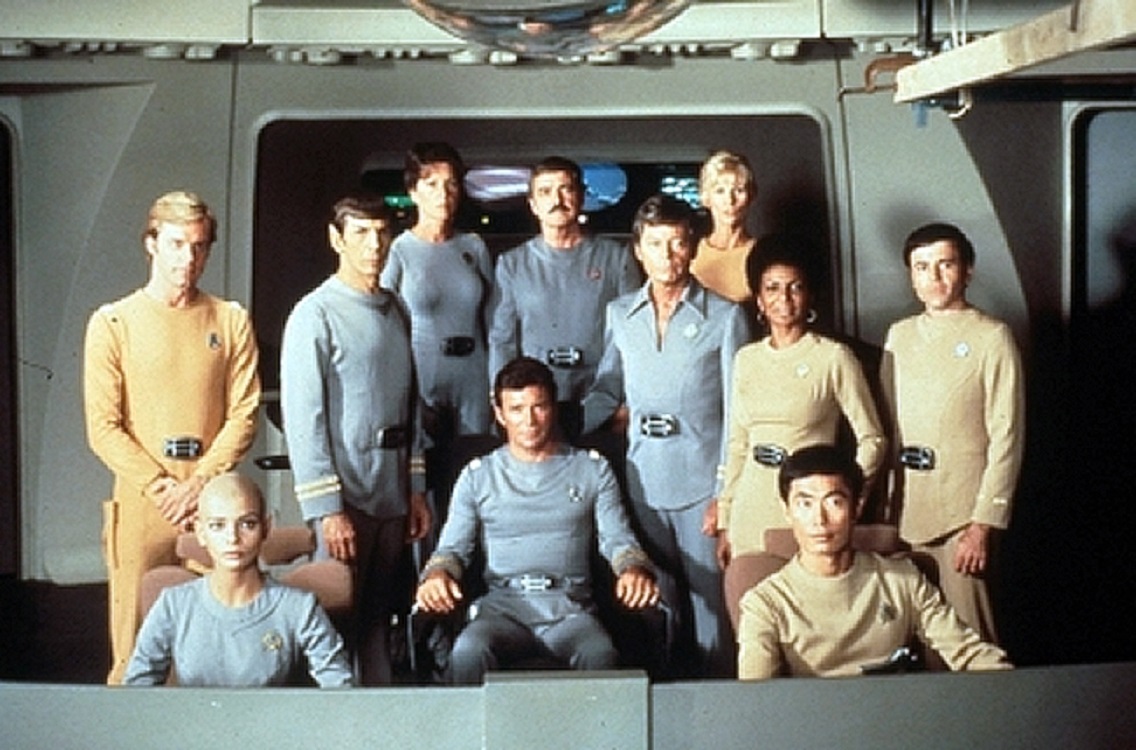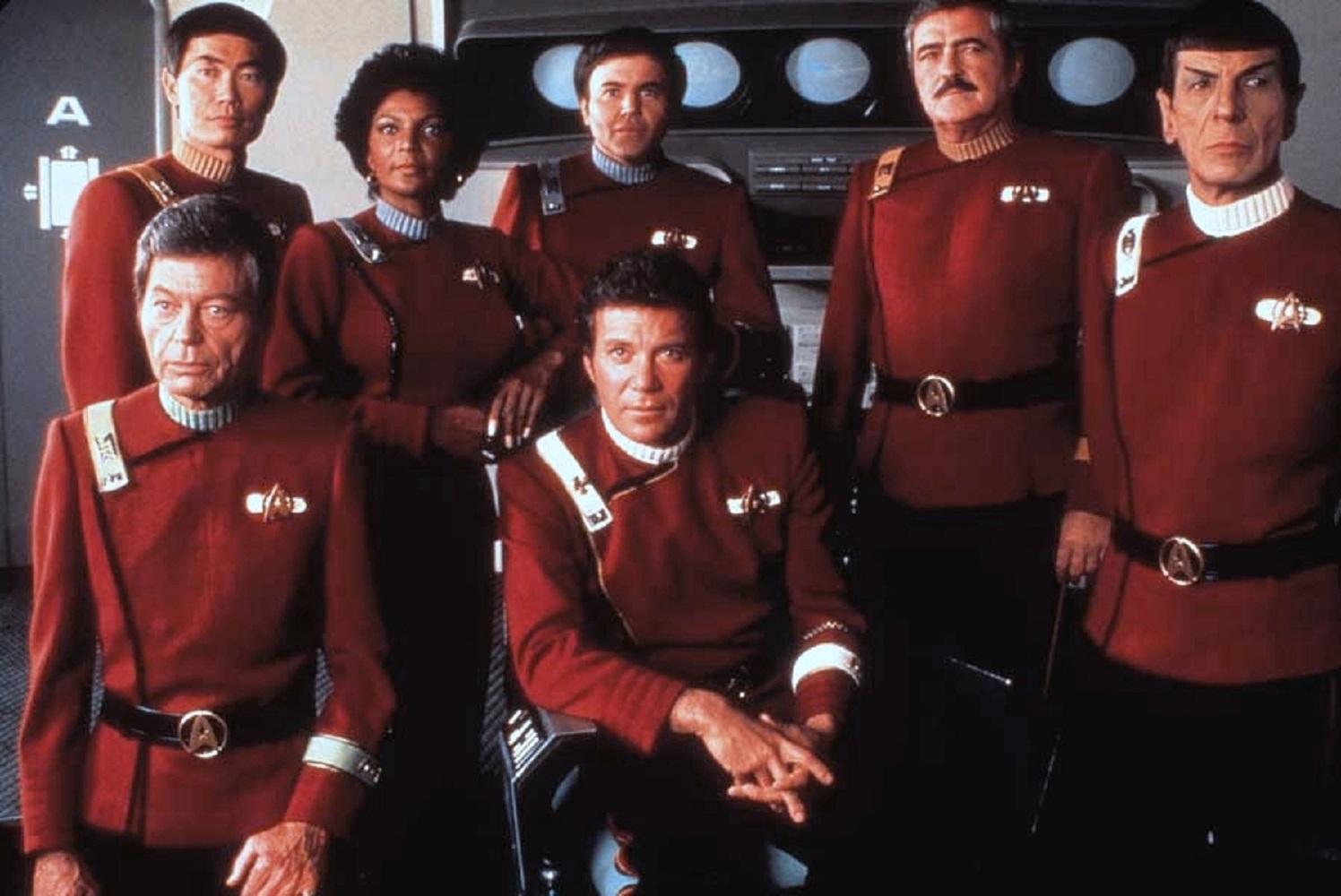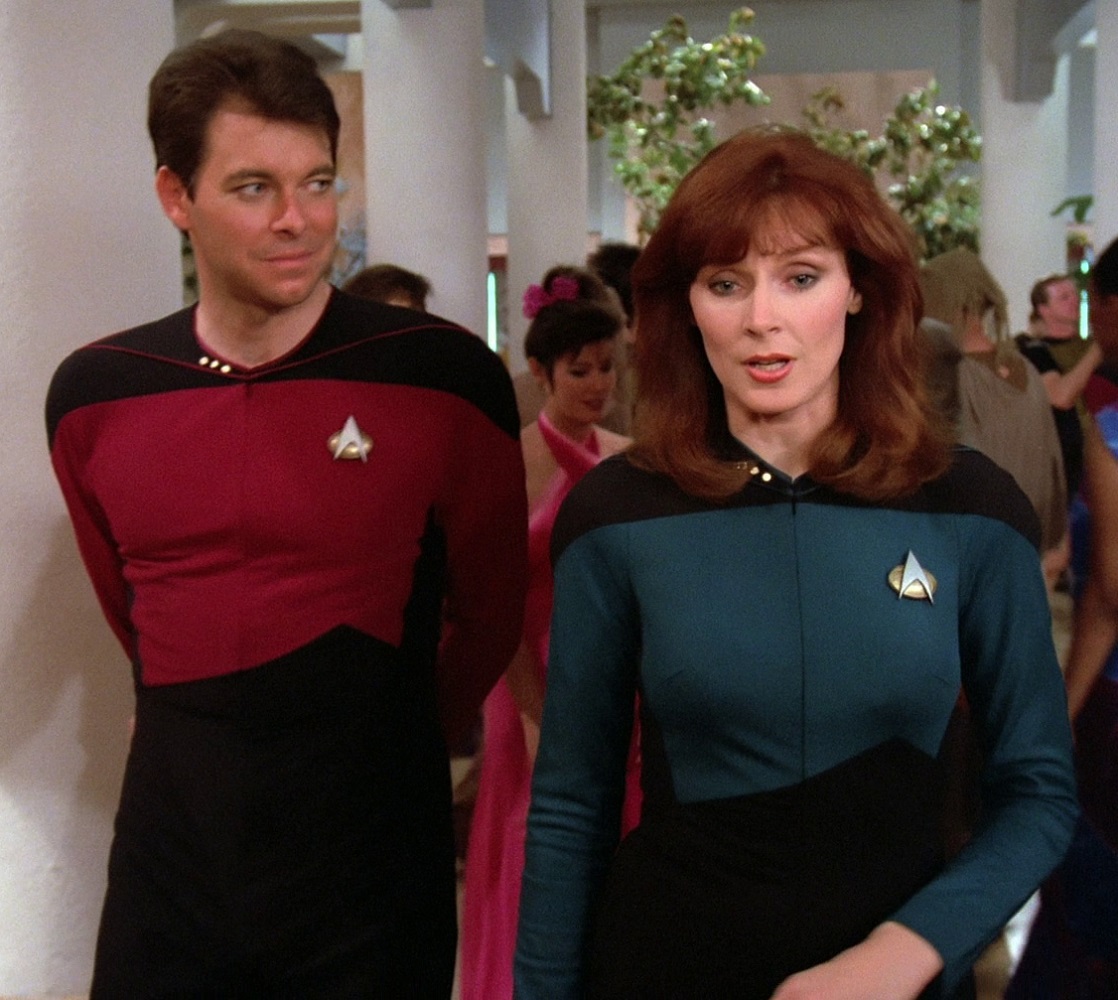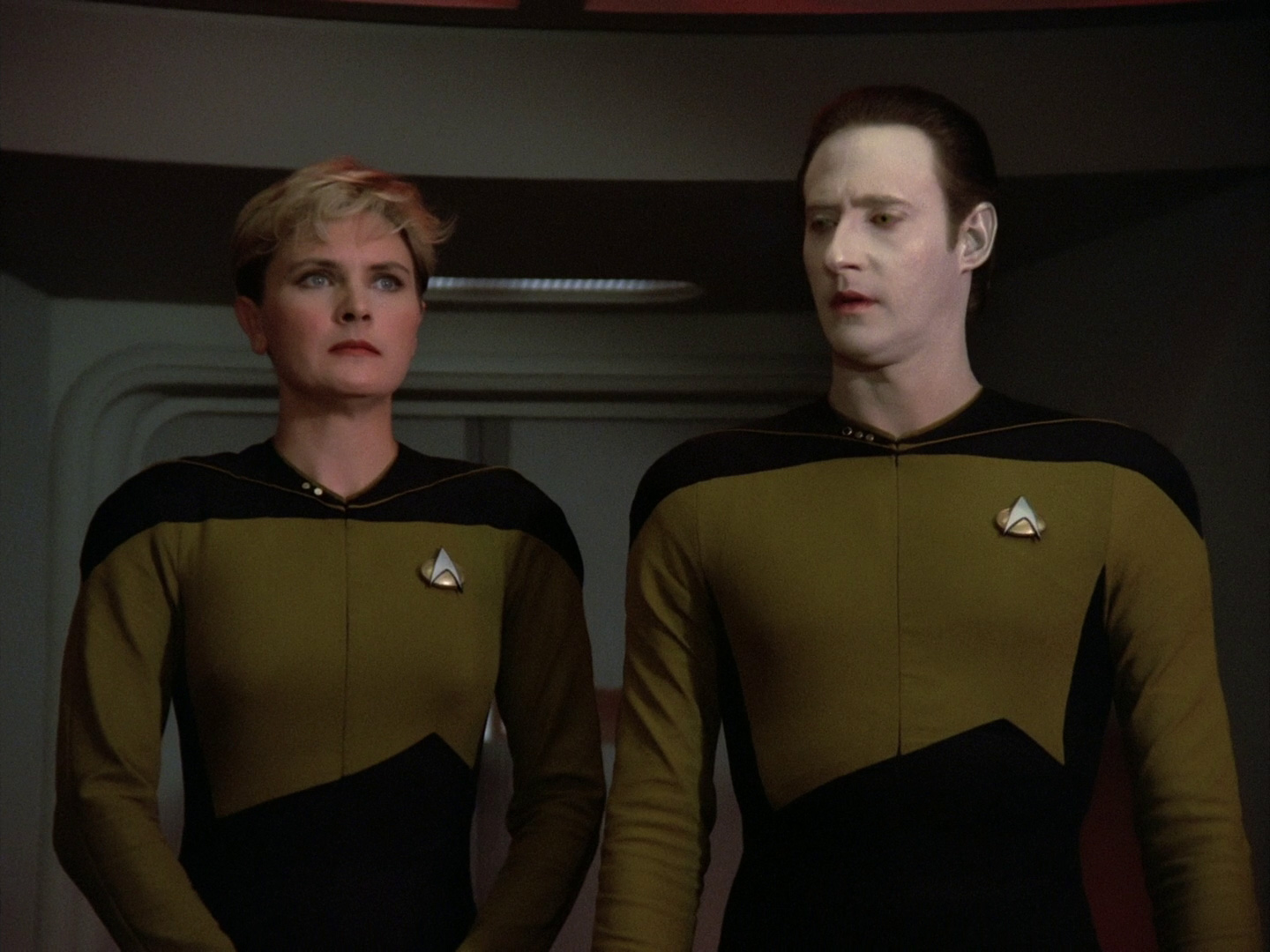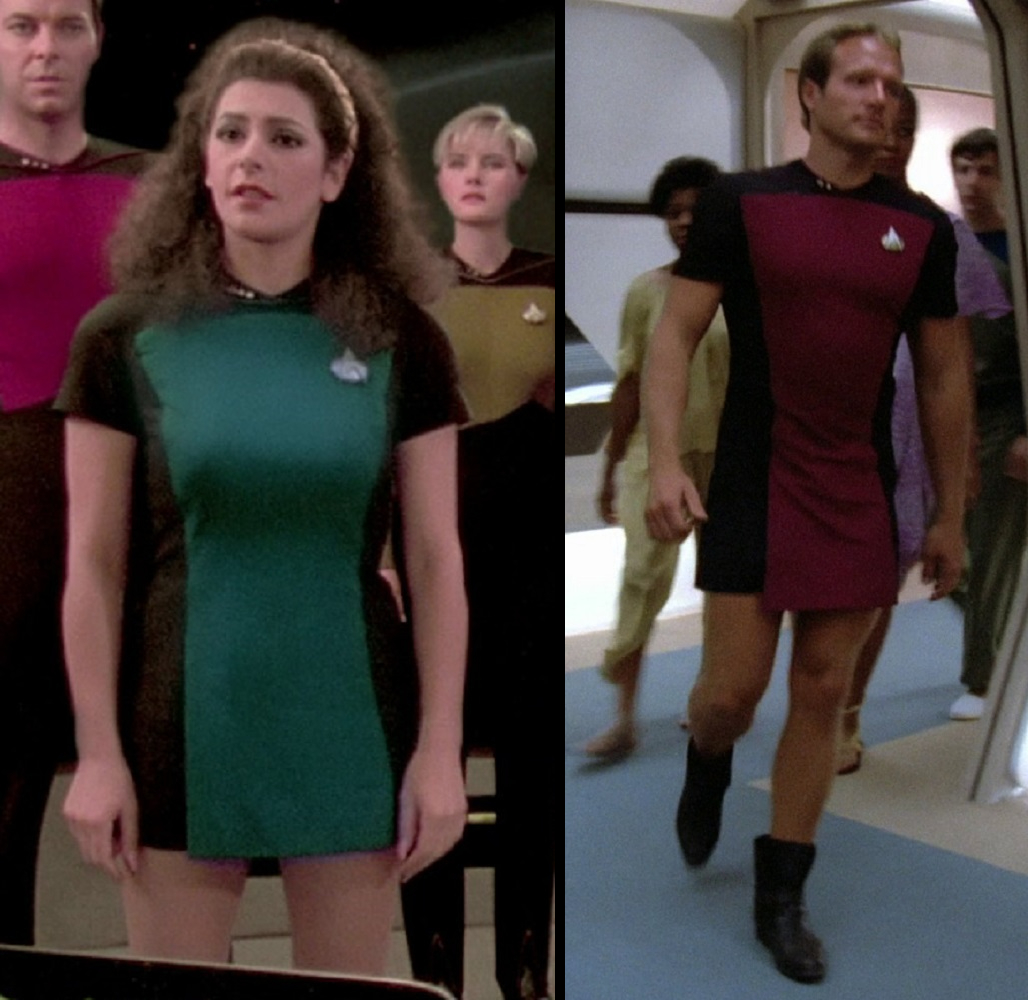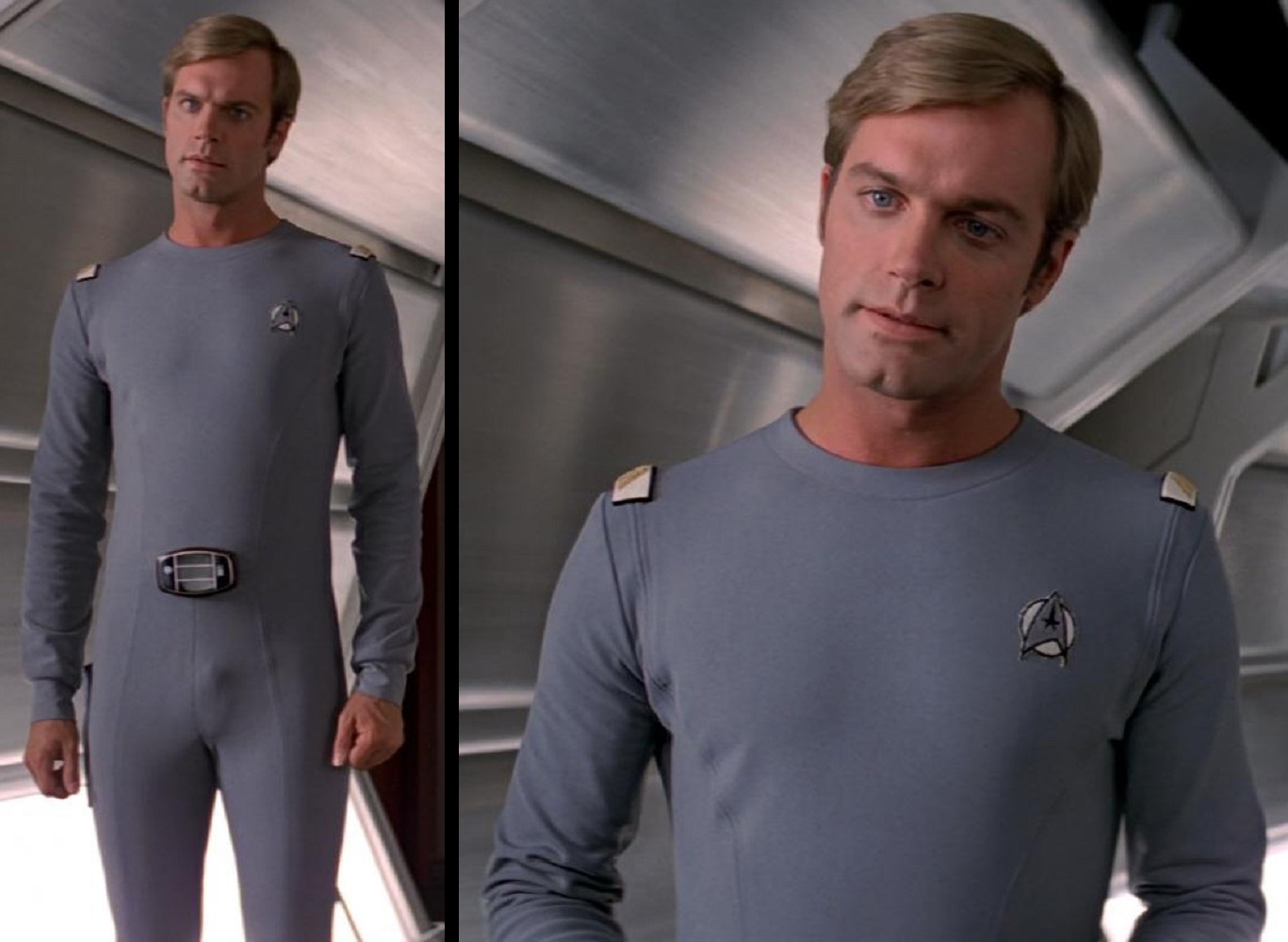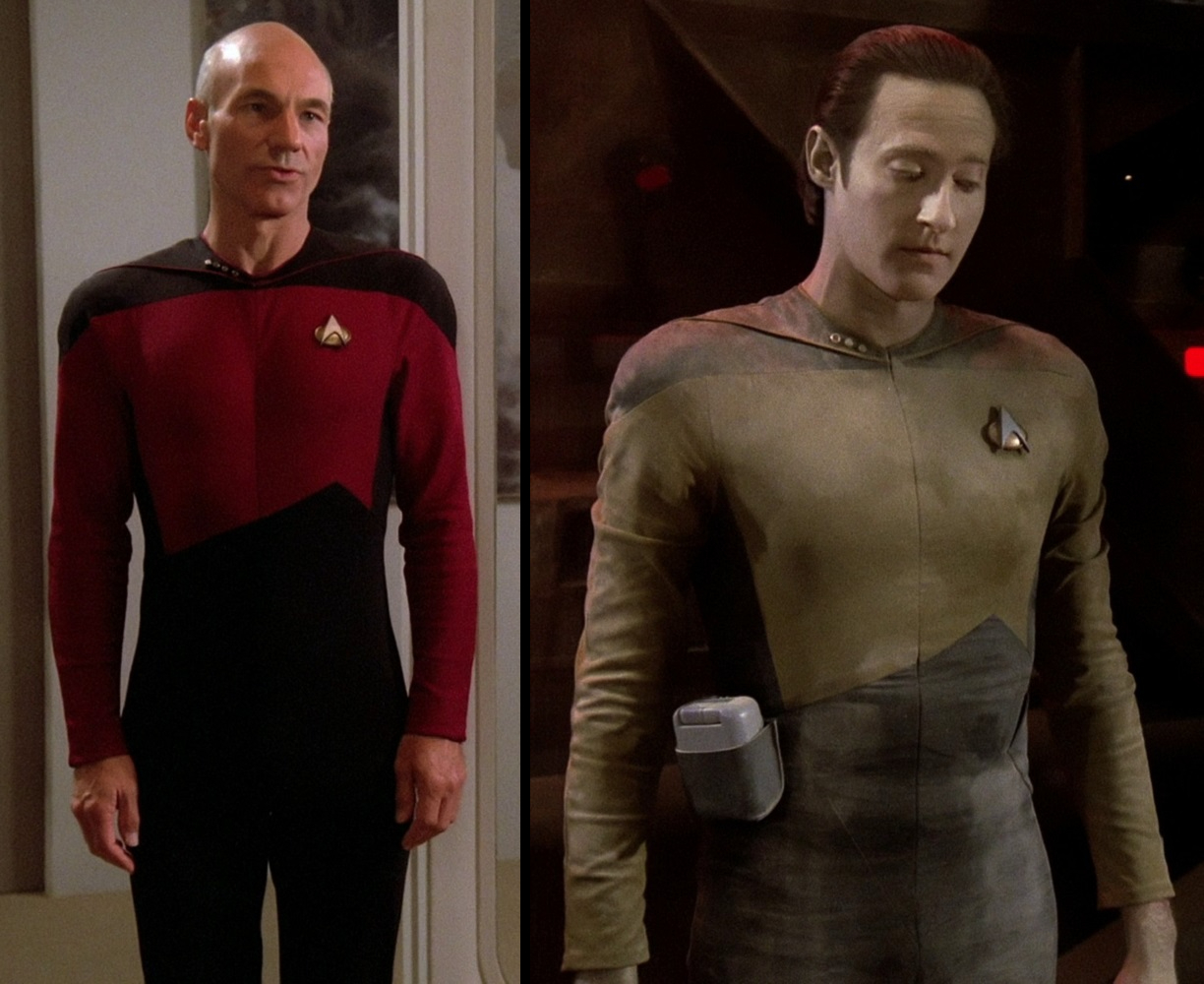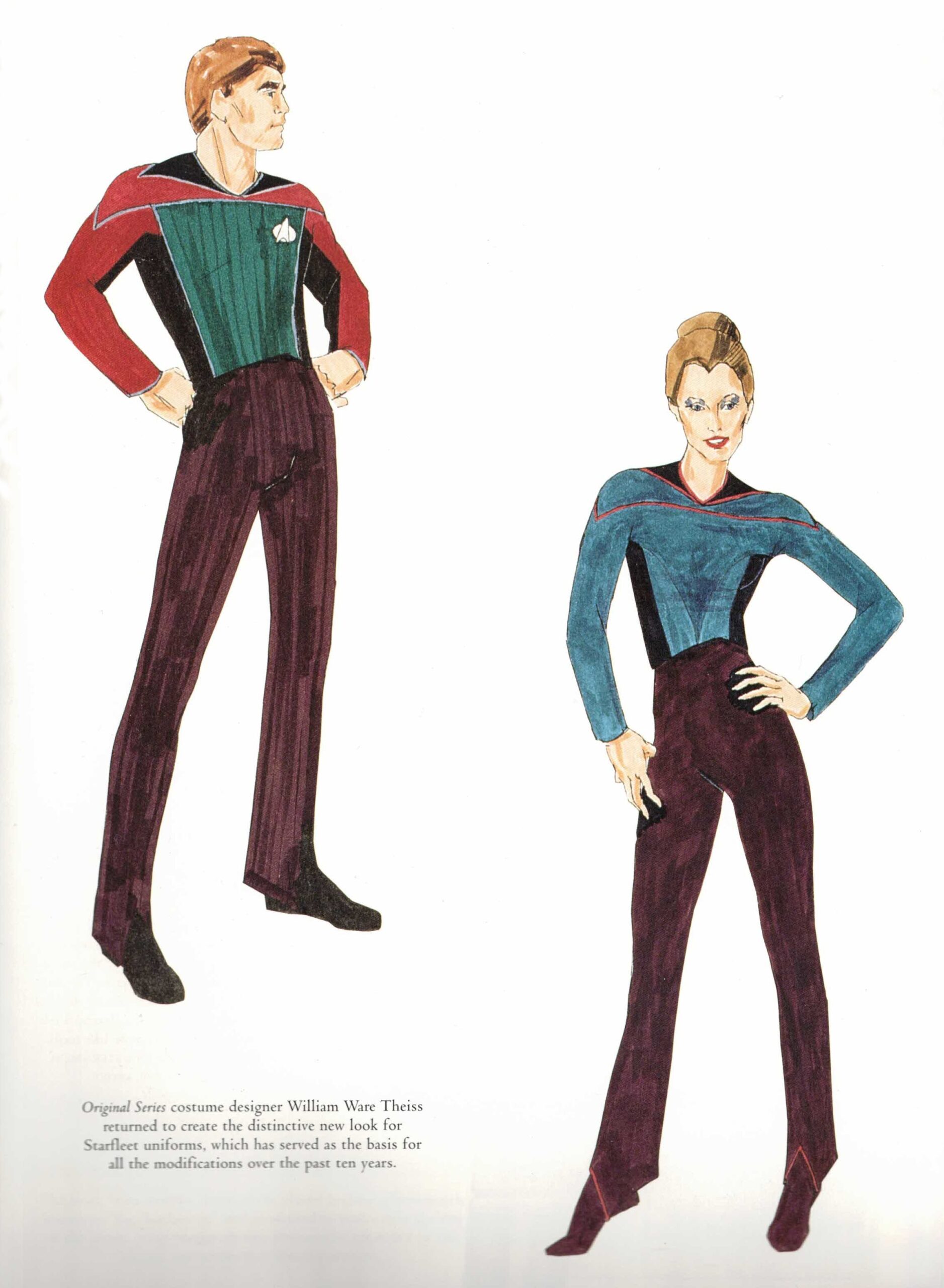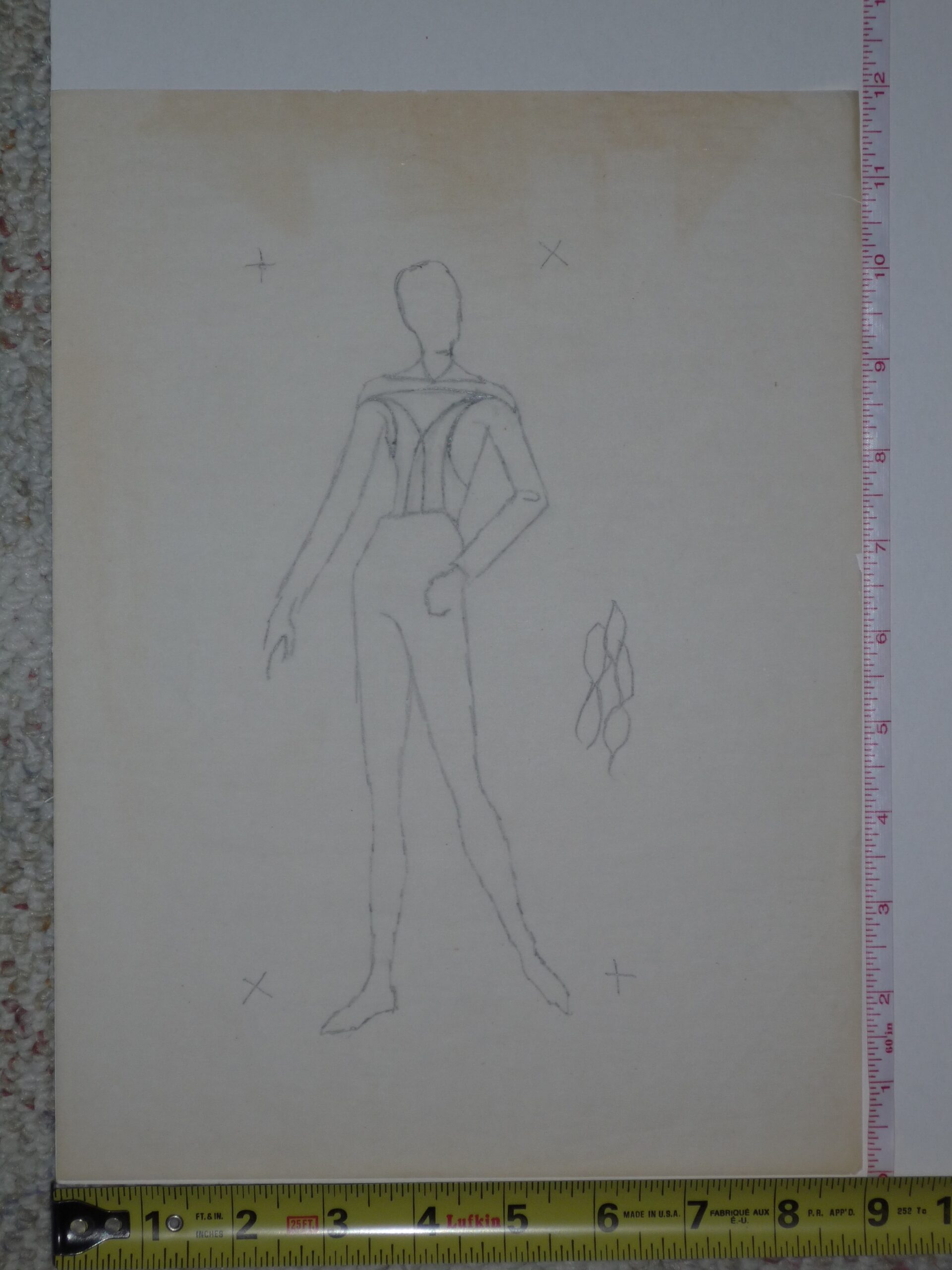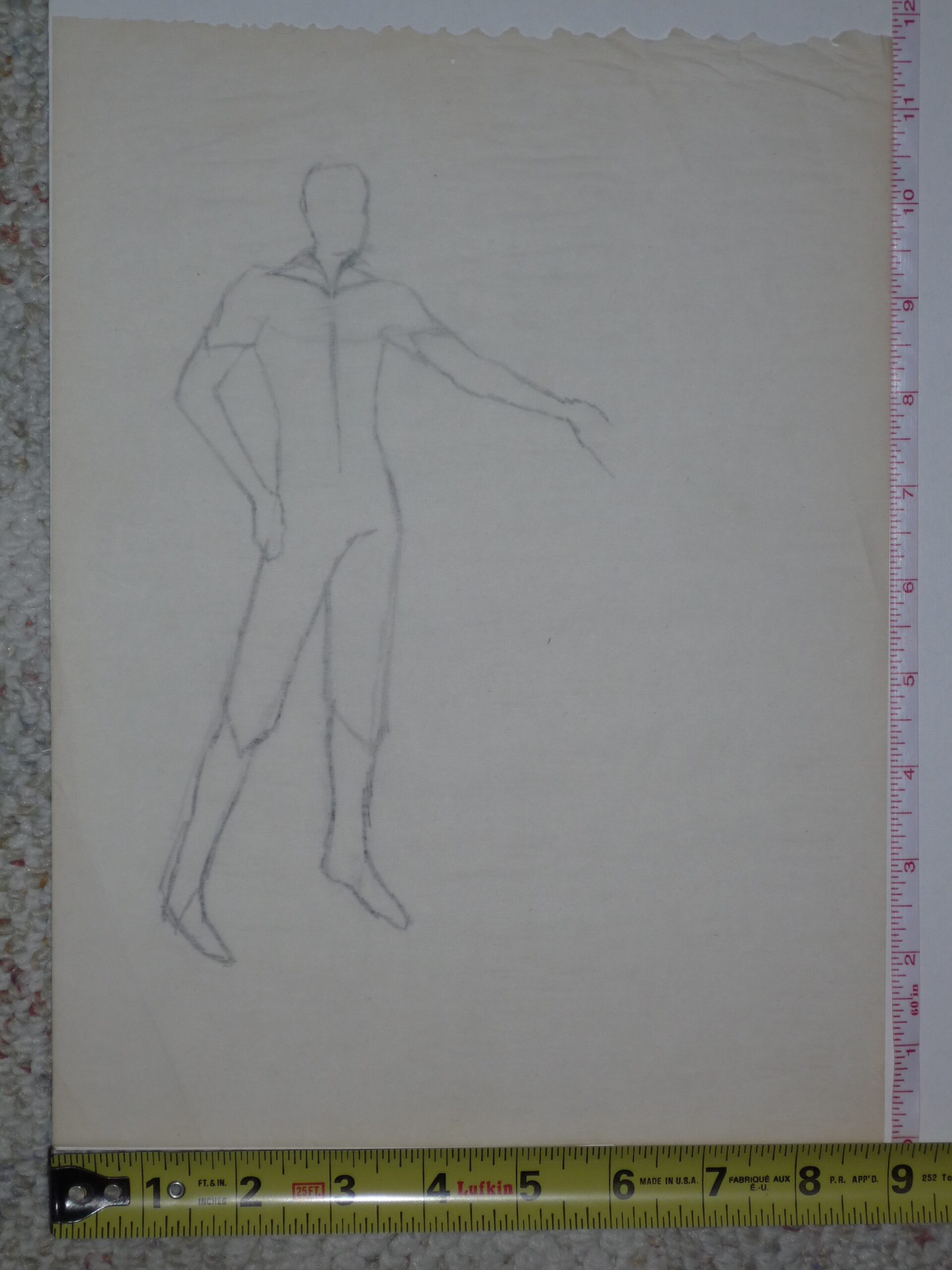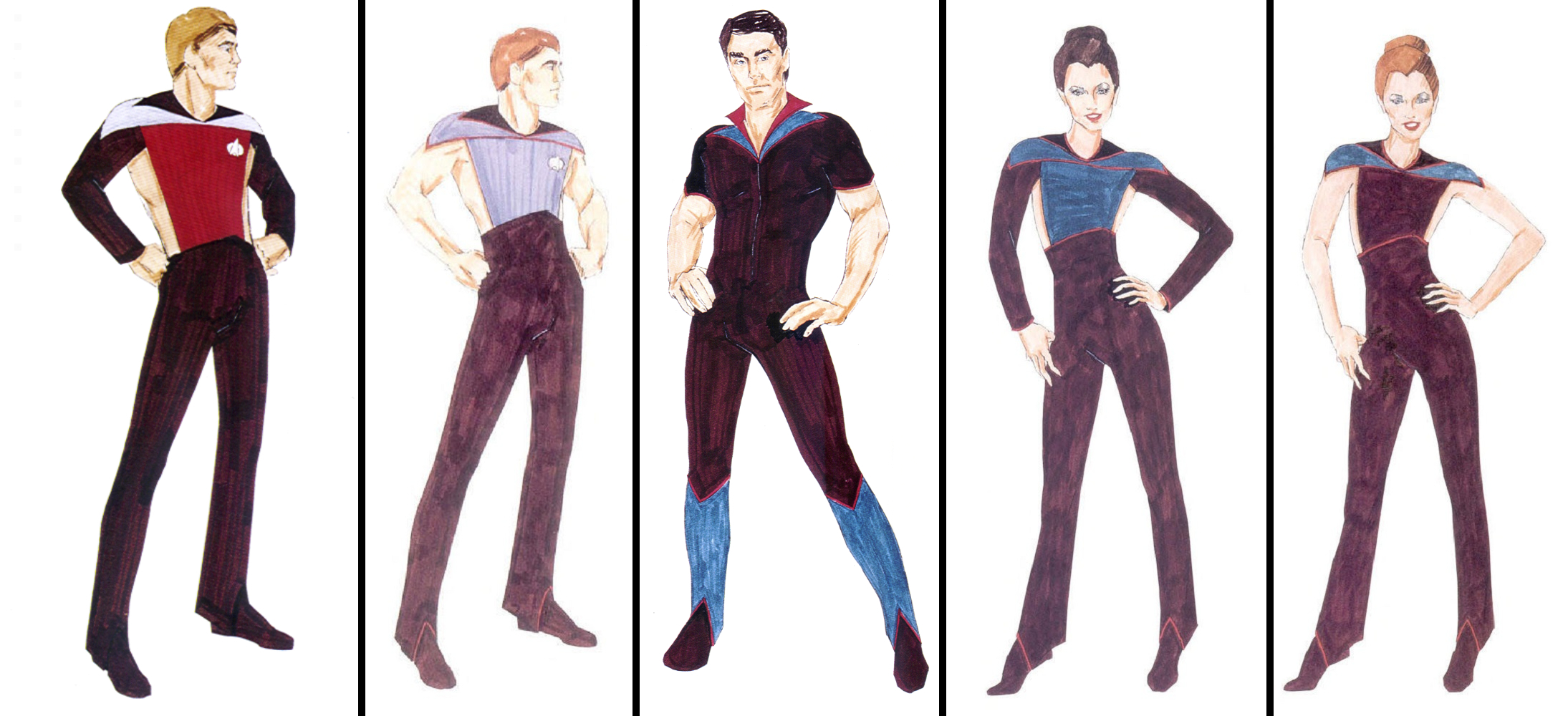Stylistic Influences
There were three different costume designers over the course of The Next Generation, the first of whom – and designer of the TNG jumpsuit – was William Ware Theiss.
Theiss had been the costume designer on Star Trek: The Original Series and the aborted Star Trek: Phase II.
Fast-forward twenty years or so …
If you’re interested in the Starfleet uniform timeline over “The Lost Era” (from the TOS movie-era uniforms to those Theiss designed for TNG), check out this blog post and its corresponding video:
And of more direct relevance, see this post (and its corresponding video) on the topic of the TNG-era uniform paradigm – why I believe TNG’s uniforms were conceived and designed the way they were:
To summarize the aforementioned posts:
Between Phase II’s abandonment and The Next Generation’s launch, there had been four feature films starring the original cast, for which Robert Fletcher was the costume designer and Gene Roddenberry had had limited involvement.
Roddenberry is said to have been unhappy with certain aspects of the TOS movies (and his lack of creative involvement with them), so it’s not surprising that as a major creative force behind the new spinoff series, he’d want to “round up” as much of the original team as possible, including William Ware Theiss.
This new series would again feature new Starfleet uniforms, and Theiss’ overall approach seems to have been to “pick up where he left off” with The Original Series and Phase II, almost entirely disregarding Robert Fletcher’s costume designs from the movies.
For example, toward the end of TOS, Theiss appears to have begun favoring knit fabrics for his Starfleet uniforms, as evidenced by the change from velour to double-knit fabrics. For The Next Generation, his Starfleet uniforms were all primarily made with heavy jumbo spandex.
He also discarded Fletcher’s expanded range of movie-era division colors and returned to his original three colors, albeit with the red and gold divisions swapped.
Although Theiss’ TNG-era uniforms are very different from those he’d previously designed for TOS, his fundamental approach was generally consistent, and it’s easy to see the overall similarities between them:
My interpretation is that his TNG-era uniforms were a direct evolution of his original TOS designs – a reconceptualization of what his 23rd-century uniforms might have evolved into over another hundred years or so.
Theiss revisited several design ideas and motifs he’d used on various costumes from The Original Series, as well.
Broadly speaking, Theiss definitely seems to have enjoyed experimenting with asymmetry, which strongly manifested in his TNG-era uniforms.
But more specifically, one such design motif Theiss explored right from the beginning with “The Cage” and “Where No Man Has Gone Before” was small openings (which I refer to as “slits”) at the ends of garment limbs:
Although Star Trek: Phase II was ultimately abandoned, production was underway and Theiss had begun work on the costume designs for the show. (Some test footage was even shot; check out the TNG season 1 Blu-Ray special features to see what might have been.)
Because Phase II appears to have been more of a direct aesthetic continuation of The Original Series, Theiss’ Phase II uniform designs were generally quite similar to those from TOS.
However, there are two key points of interest I would like to mention regarding his Phase II uniforms:
First, he’d modified the “cuffs” of his TOS trousers by adding a flared pleat to the lower front, similar to the aforementioned “limb slits.”
(Either coincidentally or intentionally, Robert Fletcher incorporated a similar motif into several of his uniform designs for The Motion Picture.)
And second, in The Original Series the Starfleet uniforms were distinctly gender-specific: two-piece (tunic + trousers) for the men, and mini-dresses for the women.
But the Phase II uniforms were apparently intended to be (at least optionally) unisex, as evidenced by these uniform trousers – presumably for wear by Janice Rand:
While perhaps not a literal inspiration for the TNG-era uniforms, I believe this may have been a notable shift in the psychology of the Starfleet uniform designs.
And while this may be reading too much into a single costume example from an abandoned show, we do know the uniforms Robert Fletcher designed for the first four TOS movies were essentially unisex.
Whether or not (or to what degree) unisex uniforms could be attributed to Theiss, one facet of the underlying philosophy of the TNG-era uniforms – and the show as a whole – seems to have been a more evolved stance on gender equality.
For The Next Generation, this manifested as men and women having the same uniform options.
(For better or worse, I believe this mentality may have led Roddenberry and/or Theiss to create the now-infamous “TNG skant” uniforms as well.)
Even though William Ware Theiss drew almost exclusively on his costume designs from The Original Series when conceptualizing his new uniforms, there were a few elements of Robert Fletcher’s movie-era uniforms that he incorporated into The Next Generation.
(Again, you can read more about those in this blog post.)
Gene Roddenberry is said to have both favored the “sprayed on clothing” aesthetic and abhorred wrinkly costumes, and Theiss favored unstructured garments made with synthetic knit fabrics, so either one or both of them seem to have really latched onto this uniform concept.
The standard TNG-era uniforms were also skin-tight jumpsuits made of heavy jumbo spandex, although thankfully with the more modest areas blacked out.
With that context, here are some neat TNG jumpsuit costume sketches by William Ware Theiss:
Observe the contrasting yoke panel colors (instead of all black), and we can only speculate as to the contrasting trim colors. (Personally, I believe Theiss was simply experimenting at this point.)
FYI, these sketches are from The Continuing Mission (Star Trek: The Next Generation), which is a very interesting book chronicling the production of TNG. If you’re interested in an engrossing, detailed narrative on the making of the show (with hundreds of accompanying concept sketches and photos), then I’d highly recommend it! 🙂
Here are a couple more design sketches, generously provided by Ray Cole:
And here’s an assortment of other fun concept sketches, culled from various other sources:

